Alternative energy sources will save the world! Choosing a solar collector for home heating
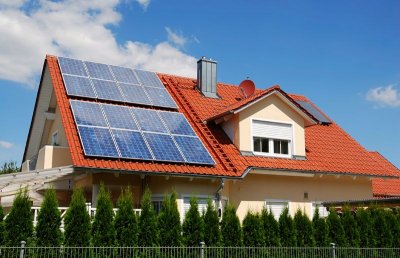
Solar collector – a technical structure that converts solar energy into heat.
Solar systems, which are based on these devices, can be found increasingly often in country houses today.
When installing such a system in a home, the source of heat is nature, which means that heat energy costs for a comfortable life, in some conditions, are practically equal to zero.
Features of a solar collector as a device for heating a house
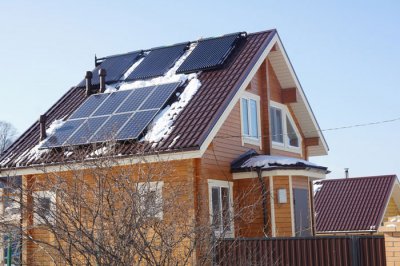
A solar collector is a device that operates by absorbing solar radiation and transferring its energy using a heat-transfer fluid.
The design of the solar system consists of the following elements:
- Solar absorber (panel).
- Storage tank.
- Water supply and drainage units.
- Regulators and sensors.
Operating principle consists of capturing solar rays with a panel and converting them into thermal energy. The accumulated energy acts on the heat carrier liquid (water or antifreeze). The heat carrier enters the water tank and gives off energy. The system is started by a special regulator.
Passing through the heat exchange circuit - a system of pipes, The heated liquid releases heat into the air. And due to this, it heats the room. In the storage tank, due to the supplied heat, a reserve of hot water is created for future use. Due to the thermal insulation system, the water heated by the sun is stored until the moment when it needs to be used.
To maintain the required water temperature in the tank, the system equipped with special sensors and pumps for forced circulationIn simpler versions, circulation occurs due to natural gravity.
Modern solar systems are currently used as the main and auxiliary elements of heating equipment. As the main source of heat, the solar system can be used exclusively in the southern regions, where there is enough sun all year round.

Installing a solar collector in a house allows you to benefit from:
- Gaining energy independence.
- Reducing the costs of purchasing gas and electricity for heating and hot water supply.
- Availability.
- Durability. Service life of one collector at least 20-25 years.
- No dirt or waste.
- Reducing the load on the home's electrical network.
Solar systems also have some disadvantages:
- High cost of equipment. The payback period of the system is approximately 7-10 years.
- Dependence on climate conditions. In some regions, solar energy is not supplied regularly, so the system will not be able to operate in the required mode. In northern regions, the efficiency of the solar collector is too low, and the installation costs are not recouped.
Types of heating devices: operating principles and installation rules
Depending on the type of absorber - solar panel, collectors are divided into three types.
Flat light absorbing
The panel of this model is a flat aluminum box with a black surface and thermal insulation on the bottom. Surface coated with tempered glass and propylene glycolIt absorbs the sun's rays.
The advantage of this type of collector is its low cost. The disadvantage is high heat loss and low efficiency. A flat device can fail when the air temperature drops up to minus 25 degreesIts efficiency depends on the angle of incidence of the sun's rays.
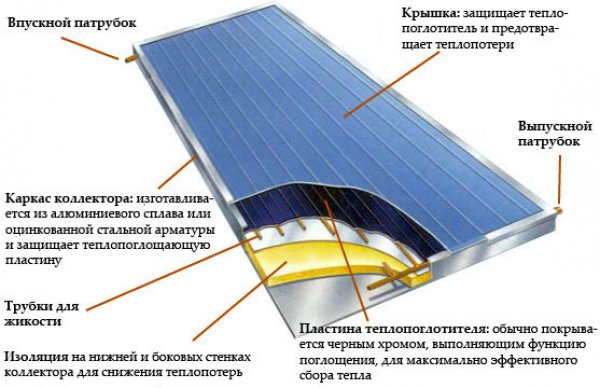
Photo 1. Components (indicated by arrows) of the design of a flat light-absorbing solar collector.
Installation rules
The flat collector panel can be installed on the roof at any angle, and then changed depending on the weather to increase the area of solar absorption. To ensure optimum efficiency in the summer, the panel is installed at an angle of 55 degrees, in winter - 35 degrees.
Important! When installing, it is necessary to take into account that the panel should not be shadowed by foreign objects. above 20 degrees from the bottom edge. When installing multiple plates, the shadow requirements must also be taken into account.
The panel is fixed on brackets or on additionally installed profiles. One of the options installations — flush with the roof slope. In this case, the panels are attached to the roof sheathing. The joints between them and the roofing material are sealed with sealant. This installation option is only possible on pitched roofs with an angle not less than 30 degrees.
The installation of the collector pipes requires openings in the roof. The roof breaches must be sealed with sealant. Pipelines can be installed on a vertical wall, then there is no need to drill holes in the roof.
The buffer tank and indirect heating tank are usually installed next to a regular water heater. All parts of the collector system are connected to each other. main pipeline with threaded connection.
Vacuum
Device with efficiency up to 85%. It can operate in any climate conditions in the presence of sunlight. It consists of a set of tubes, which are double flasks that absorb heat. The inner flask contains a metal absorber and a tube with liquid.
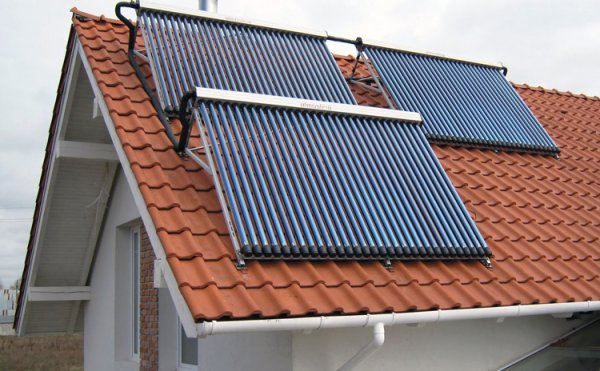
Photo 2. Vacuum solar collector installed on the roof of a house. The device consists of many tubes.
Between the two flasks there is a free space in which a vacuum is formed. Due to the vacuum, thermal insulation of the inner flask is produced. There is 2 types of vacuum collectors:
- Straight-through — where the coolant flows directly into the absorber tubes.
- With heat pipe - forms vapors that transfer heat through the coolant.
The main disadvantage of such a collector — high cost and the need to install an electric pump for forced circulation.
Installation rules
Compliance with the recommendations for installing a vacuum collector is the key to its correct and efficient operation. Galvanized or polymer pipelines cannot be used for this type of solar system. This is due to the fact that in hot weather the water inside the collector can heat up up to 300 degrees. only copper or steel tubes are used to install the vacuum manifold. During installation, the following recommendations should be followed:
- The angle of the collector panel when installed on the roof must correspond to the geographical latitude of the area.
- In open spaces, the collector is installed next to the object that consumes its heat.
- The angle of incidence of the sun for proper operation must be 90 degrees.
- The possibility of shading should be completely eliminated.
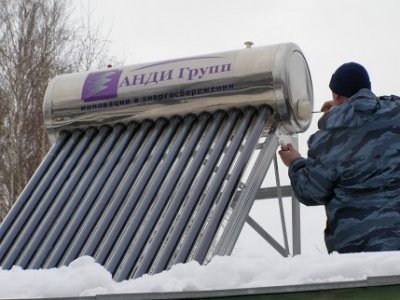
It is difficult to achieve the correct slope of the vacuum collector panel throughout the year. Therefore, it is recommended installation of mobile structures, when the angle can be changed as needed.
In the northern regions, vacuum collectors are installed almost vertical, to use the light reflected from the snow in winter.
In this case, the best option is to mount the collector on the wall of the house. Low mounting allows you to reduce the distance between the panel and the storage tank, which helps reduce heat loss.
Reference. Additional electric and gas heating is being installed after complete installation of the vacuum manifold. In this case, parallel connection should be excluded. Additional heat sources should operate in an autonomous mode, in case of insufficient heating by means of solar rays.
Air
It works by circulating heated air, which moves through the system with the help of a fan or naturally. With natural heat exchange, the hot air, having given off heat, goes down, and the heated air rises up. This is the simplest design, but its capacity is not enough to heat the house during the cold season. Such constructions can be used for heating small summer cottages during the off-season.
Air manifold consists of the following parts:
- A sealed housing for placing active components.
- The solar energy absorber is a silver panel inside the case.
- External insulation - tempered glass to protect the absorber.
- Thermal insulating material.
The advantage of an air solar collector is in the simplicity of the design and the absence of the risk of freezing of the liquid and the formation of leaks. Air collector. In addition to heating the house, it can perform the function of reducing humidity in the room. Disadvantage - extremely low efficiency.
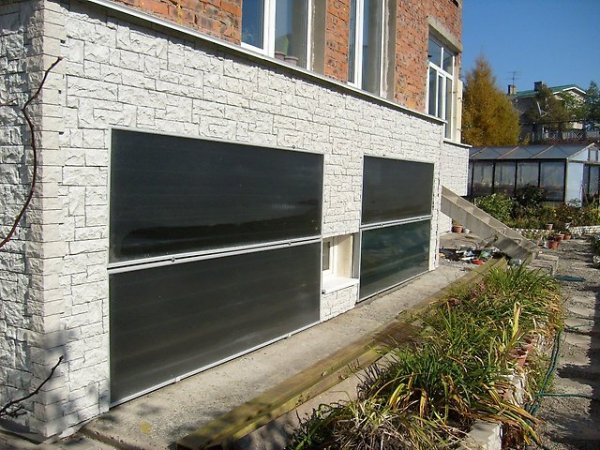
Photo 3. Air solar collectors located on the wall of the house. This method of placement is the most effective.
Installation rules
Install the air collector only on the south side of the house. Deviations towards the east or west should not exceed 40 degrees. Tilt angle - 35-45 degrees. Vertical installation of the air collector on the wall of the house is the most advantageous, as it increases its efficiency.
From the side of the panel location two holes are made in the wall, one above the other, to take in air and let it out. A fan is fixed in the lower opening, it will pull air out of the room. Heated air will enter the house through the upper opening.
Attention! Length of air ducts should not exceed 5 meters. If warm air is supposed to be transported over long distances, an additional fan must be installed. Natural air circulation will not be possible in this case.
The collector is fixed to the wall using dowels and connected to the air duct pipes. At the outlet of the air duct install a check valve, which will prevent air from passing through when the fan is not working at night or in cloudy weather.
Useful video
Watch a video that talks about the features of heating and water heating using solar collectors in winter.
Evaluate the benefits before installation
Full provision of hot water and heating with a solar collector possible only in the southern regionsIn northern latitudes, structures can only be used as a supplement to the main heating, and this must be taken into account when purchasing equipment. In most Russian regions, with their snowy winters and lack of sun, solar systems can only be used in the spring and summer to heat water. For heating, this is a practically useless thing.







Comments
Using this system allows me to save up to 40% on gas, since the main heating is turned on and works only when the temperature in the house drops due to the lack of sun. Despite such savings, the system has not yet paid for itself in 2 years of use, according to my calculations, it should pay for itself in another 1.5-2 years.